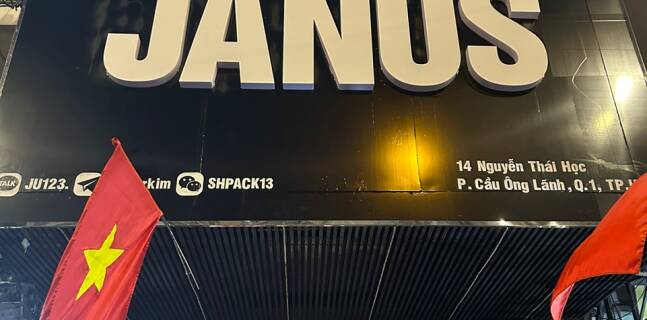20 Excellent Suggestions For Deciding On Ho Chi Minh Nightlife Options
20 Excellent Suggestions For Deciding On Ho Chi Minh Nightlife Options
Blog Article
Top 10 Tips For Vietnamese Massage Parlors Spas, Etiquette And Massage Parlors
Here are the 10 best suggestions for visiting Vietnamese massage parlors and spas. This guide will ensure you get the most out of your visit, whether at a spa or an affordable massage parlor.
1. Select a reputable spa or Parlor
It is crucial to conduct research before choosing the best massage spa in Vietnam. The quality and professionalism are not the same. Get recommendations from others or look up reviews online. You may also consider spas that are associated with well-known hotel chains.
Spas such as Golden Lotus Spa, Temple Leaf Spa as well as other luxury spas like The Spa at The Reverie Saigon are famous for their high-end service.
Avoid hotels that are cheap in areas that are popular with tourists. They might not be the most comfortable or professional.
2. Learn about the Range of Services Offered
Vietnamese massage parlors offer many services. From simple foot massage to more specialized treatments, including herbal compresses, aromatherapy, they offer everything.
Do not hesitate to inquire about any concerns you ask about the service. The staff will be happy to clarify any confusion on the menu.
3. Pre-booking is required for quality spas
Spas that are popular and expensive often become fully booked, especially on weekends and during holidays. If you're looking for a specific time or type of treatment you want, it's best to reserve in advance.
Most spas accept online reservations or reservations over the phone. Some even offer discounts on bookings in advance.
4. Communication of preferences
Before you begin the massage Discuss your preferences with the therapist about pressure (light, medium, or strong) or areas you'd like the massage therapist to concentrate on, or areas you'd like to avoid.
If you're feeling uncomfortable or the pressure is excessive during the massage, do not hesitate to make a complaint and request adjustments.
5. Dress Code and Changing Procedures
In most massage and Vietnamese spas, a robe is provided. You can also choose to wear loose fitting clothes or disposable underwear. You may be asked to wear your pajamas at the spa to enjoy traditional massages, such as Vietnamese or Thai.
The changing facilities are generally private. Please respect the spas' changing procedures and drapery techniques. They are designed to preserve dignity.
6. Tipping Etiquette
While tipping is not mandatory in Vietnam, it is generally appreciated, especially in massage salons. Typically, a tip of 10 to 15% is expected for a service.
There are some luxurious resorts that offer the cost of service on their bills, making tipping rare. However, a token of appreciation for outstanding customer service is always appreciated.
7. Know the Local Spa Etiquette
Arrive on Time. Punctuality shows respect for the staff at the spa and will ensure that you get the full length of the treatment.
Disconnect from the noise - keep conversations to a minimum in the spa area and speak quietly to create a peaceful atmosphere.
Hygiene is important. It's common practice to shower prior to treatment especially if you've been working. Certain spas offer showers or may request you to clean your feet.
8. Negotiation and payment
Cash is typically preferred by low-cost and mid-range spas. However credit cards are typically accepted in high-end spas. Are you paying with a credit card? Check for additional fees.
Do not bargain in costly or well-known spas. It's considered unprofessional. Prices may be more flexible in smaller parlors or salons in the local area. But, it's best to establish the price upfront if you're uncertain.
9. Understand the difference between legitimate and dubious massage salons
There are massage parlors that do not just provide massages. These places are adorned with neon lights and sometimes a nightclub atmosphere.
If you're looking for a massage expert seek out places that are clean, well-lit and professional. Through online reviews, you can steer clear of locations with poor reviews.
10. Take Advantage of Additional Amenities
Spas may offer additional amenities such as hot tubs, saunas steam rooms, and herbal teas. Many spas include these facilities in their costs, which means you can make use of these to unwind.
Certain spas also offer relaxation areas where you can relax after your massage. Having these facilities available can improve the enjoyment of your visit.
Additional Etiquette Tips for a Better Experience
Gratuity Envelopes: In some luxurious Vietnamese spas, you may be handed an envelope with a small amount at the conclusion of your visit to give a small tip. This is a nice way to show your appreciation.
Post-Massage: Following the massage, take your time getting dressed and standing up. A good massage can cause you to feel calm and relaxed So there's no need to rush. Drink plenty of fluids to flush toxins out of your body.
Last Thoughts
Vietnamese spas or massage parlors offer services that can be adapted to every budget and taste. Learning the local protocol will help you enjoy your experience. Relax, research, and speak clearly. You'll enjoy an unforgettable experience. View the top rated í¸ì¹ë¯¼ 밤문í for site advice.
Vietnamese Street Restaurant Food Tips Night Markets, Trendy Restaurants
Vietnamese food is known for its fresh ingredients and delicious flavors. It ranges from street food at bustling night markets to trendy eateries and international cuisine with an added twist. Here are ten top tips to make the most of your culinary trip to Vietnam.
1. Embrace Street Food Culture
Street food is a fundamental aspect of Vietnamese culture--and the best way to enjoy it is by visiting local night markets or street food stalls. The must-try dishes are banh mi (Vietnamese sandwiches) as well as pho soup (noodles) and buncha (grilled pork noodles).
Popular night markets such as Ben Thanh Market in Ho Chi Minh City or Dong Xuan Market in Hanoi are great places to start exploring street food.
2. Street Food Dishes You Need to Know
By knowing the names and descriptions of Vietnamese street food It will help you navigate menus. Key dishes to try include:
Banh Xeo is a Vietnamese savory pancake.
Goi Cuon (fresh spring rolls)
Bun Bo Hue (spicy beef noodle soup from Hue)
Cao Lau is a pork noodle dish that originates from Hoi An.
Che (Vietnamese sweet dessert soup)
3. Visit the Night Markets for Affordable and Authentic Experiences
Night markets offer a lively environment with a variety of food souvenirs, local merchandise. There is a chance to sample cheap street foods and get a taste of local life at night markets.
Street food and local snacks are popular in markets like Hanoi's Weekend Night Market and Da Nang's Helio Night Market.
4. Observe What Locals Eat for the Top Street Food Options
Select a street food vendor based on the recommendations of locals. If there is a queue or locals in the stall, it typically indicates that they're serving quality food that is fresh and of high-quality.
You can tell whether the food is freshly prepared by observing how it's made. Don't be shy to ask other travelers for recommendations or talk to locals.
5. Utilize the Basic Vietnamese Phrases to Enhance Your Experience
A little Vietnamese can make a difference in markets on the streets and smaller eateries. Phrases like "Bao nhieu tien?" (How much?) Food ordering is much easier if you use phrases like "Choi mot ..." or "Choi mot ...)".
The sellers may not be fluent in English However, they are usually patient and willing to help you navigate the menu.
6. Try Trendy Restaurants for a fresh twist on Vietnamese Cuisine
The cities of Vietnam are home to a growing variety of fashionable eateries that provide a contemporary approach to traditional cuisine. Restaurants that incorporate the latest techniques of fusion or top-quality ingredients to offer classic dishes a contemporary twist.
Restaurants like The Deck Saigon, Secret Garden (Ho Chi Minh City), and Home Hanoi are famous for their innovative Vietnamese dishes served in elegant settings.
7. Sample International Cuisine With A Vietnamese Twist
Vietnam's food scene is a blend of international cuisine as well as local flavors. You'll see Vietnamese spices and other herbs in Japanese, French, Korean, Italian, and other eateries.
You shouldn't miss the Vietnamese-styled pizza, fusion-sushi or French-inspired bakery that uses local ingredients like chilli or lemongrass.
8. Take note of hygiene and freshness
Although street food is usually healthy to eat however, it is best to stick to vendors who cook food fresh and right in front of your eyes. Beware of food stalls that have been left out in the heat for a long period of time.
It's generally true that trendy, high-end eateries have higher hygiene standards. However, you may still check online for reviews in case you are concerned about food safety.
9. Find local markets to purchase ingredients and cooking classes.
Find out more about the ingredients in Vietnamese cuisine by going to local markets such as Ben Thanh Market, Dong Ba Market or Hanoi's Long Bien Market. These markets offer the chance to view fresh produce and spices as well as meats, fish, or other items.
The most trendy restaurants and hotels provide cooking classes that show you how to prepare Vietnamese food using the ingredients of the region.
10. Get local drinks with your meals
If you pair your meals with local beverages, the food experience will be enriched. The most popular options are Vietnamese Iced Tea (Ca Phe Sua Da), sugarcane or Hanoi Beer.
Local cocktails can be found in trendy bars made from lemongrass or lychee. Drinking these cocktails will aid in cooling off.
Vietnamese food: tips to enjoy it!
Request sauces and herbs: Vietnamese dishes often come with a wide variety of sauces and herbs like nuoc-cham (fish sauce-based dipping sauce) as well as chili paste. Don't be afraid to ask for more if you want to adjust the flavor to your taste.
Don't miss street food deserts. Vietnam offers a variety of sweet treats, including Banh Flan and local ice-creams. Night markets are an excellent way to discover these sweet snacks.
You can also read our conclusion.
Vietnam is home to a wide variety of food which includes everything from local street food and traditional cuisines to trendy restaurants. Learn these tricks to be ready to navigate Vietnamese markets at night, discover the local cuisine and enjoy the unique flavors which are what make Vietnamese food unique. The diverse cuisine scene in Vietnam has an array of options for all tastes regardless of whether or not you're an avid foodie or not. Check out the most popular í¸ì¹ë¯¼ ê°ë¼ì¤ì¼ for more advice.